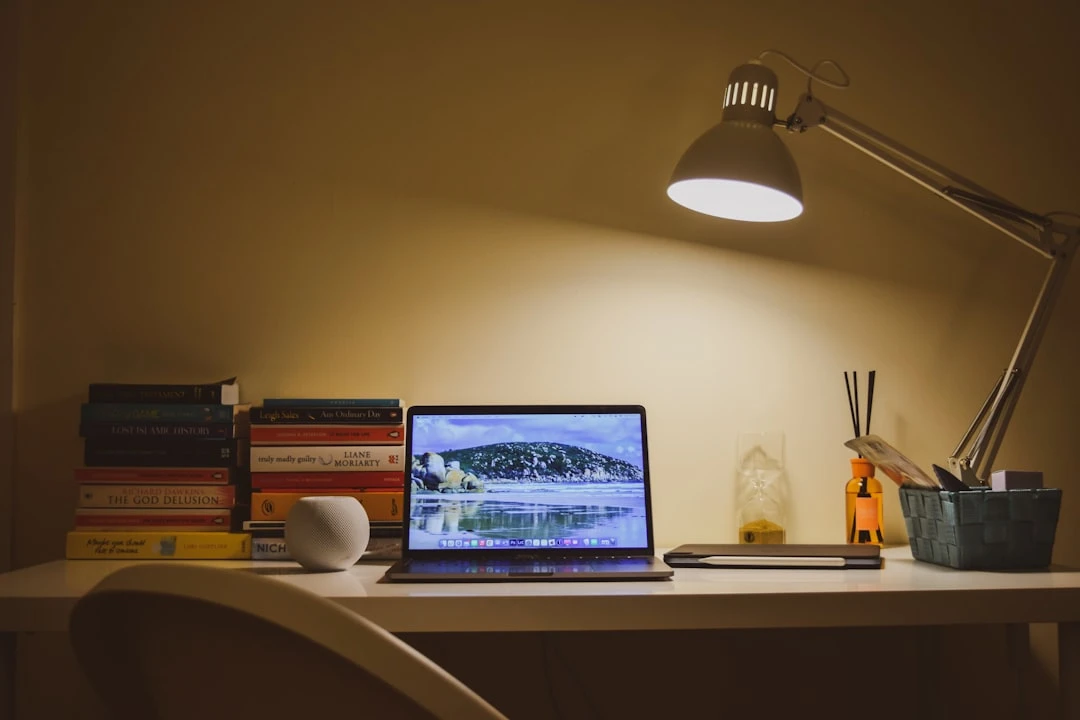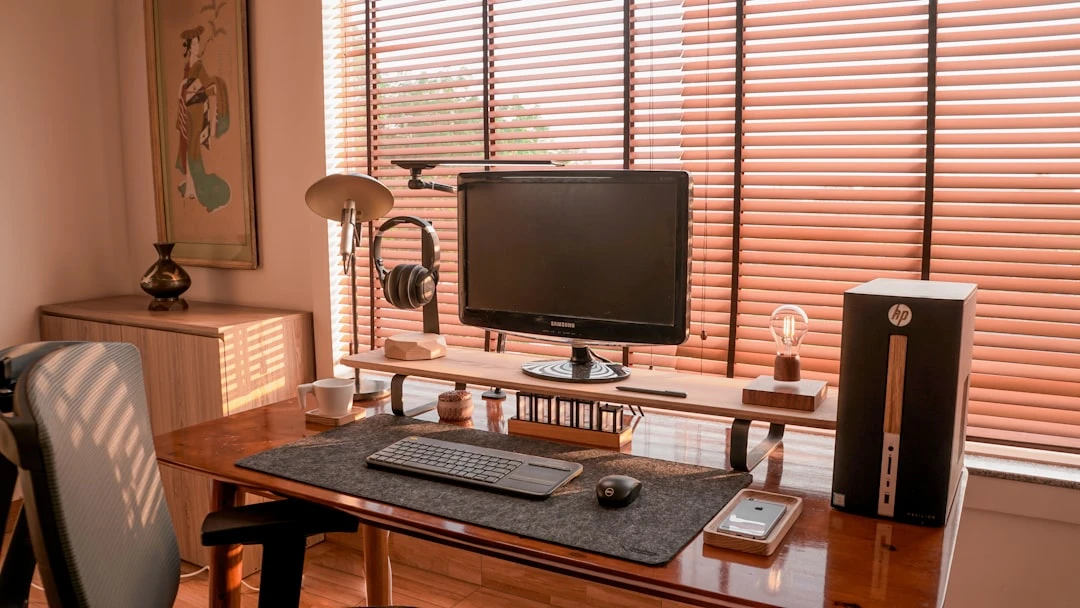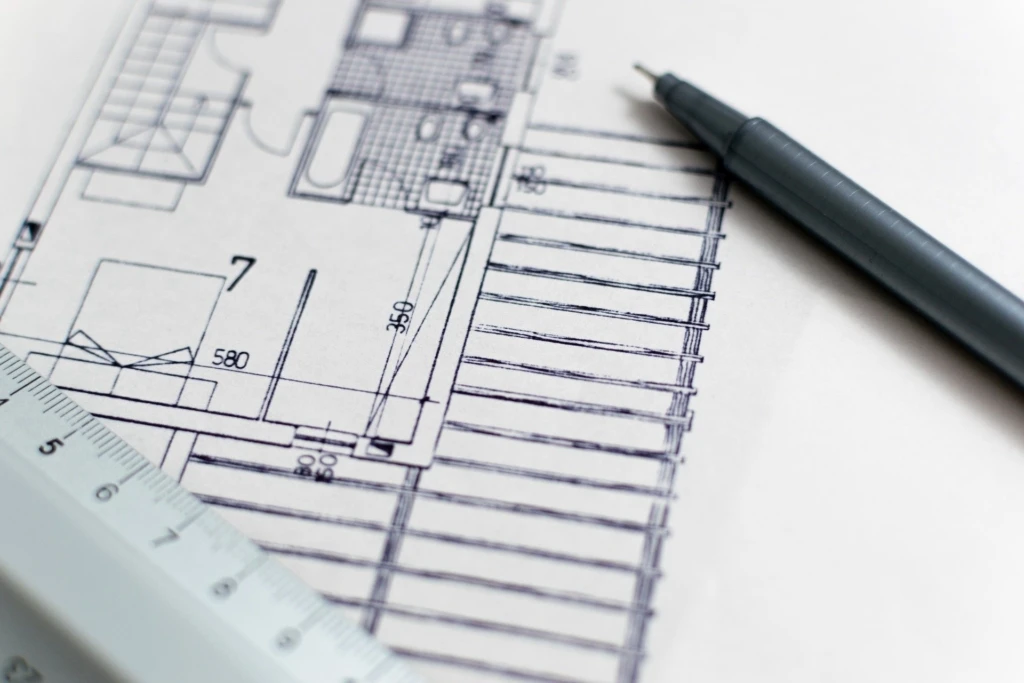How to Create a Healthy and Efficient Work and Study Space at Home

Home has become an increasingly important place for both work and study activities. A well-thought-out home office and study corner is not only convenient, but directly affects your productivity, health, and well-being. How to create an environment that supports concentration, creativity, and ergonomics? Let's take a closer look at evidence-based recommendations that will help you design the ideal work and study space in your home.
Ergonomics: the foundation of your body's health
Ergonomics is one of the most important aspects when designing a work and study space. A well-planned ergonomic environment reduces physical strain and helps prevent work-related discomfort.
The American Occupational Safety and Health Administration recommends positioning your computer monitor at eye level and approximately an arm's length away to reduce neck and eye strain. The keyboard and mouse should be positioned at elbow height, so that your wrists are straight, reducing strain on your wrists and forearms. Proper workplace design minimizes bending, stretching, and twisting.
Choosing the right chair is especially important. According to medical experts' recommendations, the chair height should be adjusted so that your feet rest on the floor and your thighs are parallel to the ground, creating a 90-degree angle at the knees.
It's also worth considering purchasing an adjustable-height desk, which allows you to alternate between sitting and standing throughout the day. Such sit-stand desks help reduce static postures and improve overall comfort.
"An electric desk also gives you the option to work while standing," is noted in our home office furniture selection guide. Such desks are user-friendly and ergonomic, supporting better posture.
Lighting: the right light for your work environment
Lighting directly affects your productivity, concentration, and eye health. Your work or study space should be positioned so that you can make maximum use of natural light, while at the same time avoiding glare on your screen.
Natural light is ideal, but it's not always sufficient or properly directed. For example, a desk lamp helps create balanced lighting that reduces eye fatigue.

"Choose a spacious room with minimal furniture and good natural light, and place your desk near the window and add lighting to your work surface, because good light is healthier for your eyes," recommends our article on home office furniture.
To reduce eye strain, it's good to take regular breaks from the screen. In recommendations for working from home, it is noted that "breaks are very important for resting your eyes as well". During breaks, you should do eye exercises or simply look into the distance.
Noise and sound insulation: supporting concentration
Noise is one of the main factors that disrupts concentration. The National Institute for Occupational Safety and Health's 2024 guidelines emphasize that even if noise levels remain within acceptable limits, they can still affect concentration and communication. Research shows that a variety of measures must be used, including noise barriers and workplace design optimization, to minimize the impact of noise on concentration.
In home conditions, you can reduce noise in several ways:
- Use noise-canceling headphones
- Consider improving sound insulation on walls, doors, and windows
- Place your work corner away from the main living area of your home
"Sound insulation reduces sound transmission from one room to another or from the external environment into indoor spaces, and effective insulation increases privacy and comfort, improving sleeping and working conditions," explains our sound insulation article.

There are several solutions for reducing noise, depending on your living space. If you live in an apartment building, when looking for a new home, you should pay attention to sound insulation. As we note in our sound insulation article: "Check the material and thickness of the walls, the type of windows (the more glass layers, the better), the floor construction, and the noise level of the ventilation system."
Space layout and organization: the key to efficiency
The layout of your work and study environment directly affects productivity and mood. Efficient space planning reduces wasted time and increases concentration.
The 2024 updates from the Occupational Safety and Health Institute recommend designing workplaces in a way that minimizes physical strain through work process redesign, including optimization of workplace layout and equipment placement. The recommendations emphasize that materials and equipment should be positioned within reach, reducing awkward postures.
Keep these principles in mind:
- Arrange your work surface so you have enough space to move around
- Keep your work surface clean and organize the tools you need for work logically
- Create a physical boundary between your work and living environment
Colors and psychological impact: balancing creativity and concentration
Color psychology is an important aspect of creating a work and study environment. Colors have the ability to affect mood, energy levels, and even cognitive abilities.
The perception of colors affects mood and behavior, for example, blue creates calmness and red increases alertness.
When choosing a color scheme for your work and study space, consider the following recommendations:
- Blue and green tones enhance concentration
- Yellow and orange tones promote creativity
- A balanced solution can combine neutral base tones with accent colors
Use at least one brighter tone as an accent to create a focal point. You should also take into account the lighting conditions of the room: "in south-facing rooms, stronger tones can work well, while on the north side prefer lighter neutrals."
Air quality: fresh air helps you think
Air quality is an aspect that is often underestimated, but which significantly affects concentration and overall well-being. Poor air quality can cause fatigue, headaches, and difficulty concentrating.
To improve the air quality in your work and study space:
- Ventilate the room regularly
- Consider an air purifier, especially if you live in an area with heavy traffic
- Add plants to the room, which help purify the air
Even a small green corner helps you relax and improves home air.
Technology and equipment: tools for productivity
Choosing the right technology and equipment is an important part of creating an effective work and study environment. Technological solutions should support your working style, not create additional obstacles.
Main recommendations:
- Invest in a quality computer monitor that is large enough and has appropriate resolution
- Consider using a separate keyboard and mouse, especially when working with a laptop
- Backup and chargers reduce potential work interruptions
According to the Occupational Safety and Health Administration guidelines, the computer screen should be positioned directly in front of you, with the top edge at or slightly below eye level, so that your head and neck are balanced and in line with your upper body. This helps prevent muscle tension and eye fatigue.
Rest and work balance: quality over quantity
A productive work and study environment doesn't just mean the physical setting, but also the right approach to balancing work and rest.
Set a definite work schedule. Divide your work time into blocks of approximately one hour each, and take 10-20 minute breaks between each block.
Quality rest is as important as effective work. In our good sleep article, it is emphasized that "good sleep is essential for ensuring well-being and health, and for this you need to create appropriate sleep habits and a comfortable sleep environment at home, which helps improve sleep quality." Good sleep begins with the right rhythm of work and rest throughout the day.
Conclusion: invest in your workspace
A well-organized work or study corner is an investment that pays for itself many times over through better productivity, health, and well-being. Thoughtful ergonomics, lighting, sound insulation, and space planning create an environment where you can give your best.
If you're looking for a new home where you can create the ideal work or study space, then from the Kinnisvara24 portal you will find a wide selection of apartments and houses that may suit your needs. Whether you need a apartment for sale, an apartment for rent, or would like to explore new developments – our portal offers options in every region of Estonia.
Remember that the perfect work and study space doesn't have to be expensive or complicated. Thoughtful solutions that take into account your personal needs and room possibilities can create an environment where you enjoy working, studying, and concentrating.




